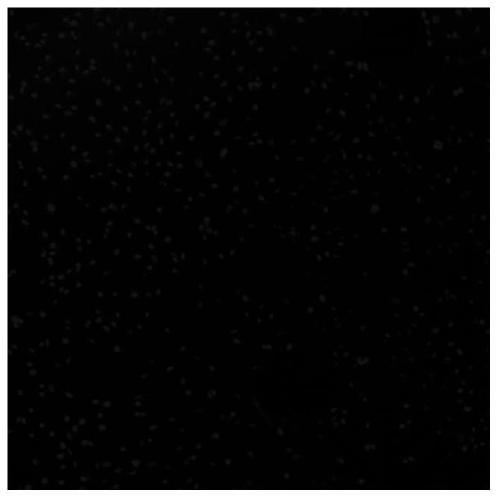A method for obtaining in vitro cultured cells/cell thin layers by irradiation with visible light
An in vitro culture and visible light technology, applied in the direction of epidermal cells/skin cells, cell culture support/coating, tissue culture, etc., can solve the problems of cytotoxic genes, mutations, etc., and achieve simple operation, easy implementation, and good signal transmission Effect
- Summary
- Abstract
- Description
- Claims
- Application Information
AI Technical Summary
Problems solved by technology
Method used
Image
Examples
Embodiment 1
[0027] On the surface of the above-mentioned monocrystalline silicon substrate (p / n junction depth 0.3 μm, phosphorus diffusion), osteoblasts were cultured in vitro, and the seeding density was 3×10 4 piece / cm 2 , placed in a cell incubator with a constant temperature of 37 degrees Celsius and 5% carbon dioxide for 1 day, the wavelength was 400-800 nanometers, and the intensity was 30mW / cm 2 95% of the cells can be detached from the surface after 20 minutes of irradiation with visible light from the top of the cell culture vessel. figure 1 and figure 2 Confocal laser micrographs of cells cultured in Example 1 before and after visible light were observed by confocal laser microscopy. Compared figure 1 and figure 2 , it can be seen that a large number of cells detach after being irradiated by visible light, indicating that visible light achieves the detachment of single cells.
Embodiment 2
[0029] On the surface of the above polysilicon substrate (p / n junction depth 0.5 μm, phosphorus diffusion), osteoblasts were cultured in vitro, and the seeding density was 1×10 5 piece / cm 2 , placed in a cell incubator with a constant temperature of 37 degrees Celsius and 5% carbon dioxide and cultured for 5 days, the cells formed a membrane, with a wavelength of 400-800 nanometers and an intensity of 50mW / cm 2 Visible light is incident from the top of the cell culture vessel and irradiated for 10 minutes to detach the cell sheet from the surface. image 3 It is the photos before and after the cultured cell sheet in Example 2 observed by Nikon camera under visible light. It can be seen that the entire cell sheet is completely desorbed after being irradiated with visible light.
Embodiment 3
[0031] On the surface of the above amorphous silicon substrate (p / n junction depth 0.9 μm, phosphorus diffusion), osteoblasts were cultured in vitro at a seeding density of 5×10 5 piece / cm 2 After being cultured in a cell incubator with a constant temperature of 37 degrees Celsius and 5% carbon dioxide for 3 days, the cells form a membrane, with a wavelength of 400-800 nanometers and an intensity of 70mW / cm 2 Visible light is incident from the top of the cell culture vessel and irradiated for 8 minutes to detach the cell sheet from the surface. Figure 4 It is the migratory fluorescent image of the cultured cell sheet in Example 3 observed by a fluorescence microscope after being desorbed under visible light and then cultured for 2 days. It can be seen that the cell sheet desorbed by visible light can crawl out new cells well after re-cultivation, and maintain good cell shape and vitality, indicating that the cell sheet desorbed by visible light maintains good re-migration p...
PUM
| Property | Measurement | Unit |
|---|---|---|
| strength | aaaaa | aaaaa |
| thickness | aaaaa | aaaaa |
| thickness | aaaaa | aaaaa |
Abstract
Description
Claims
Application Information
 Login to View More
Login to View More - R&D
- Intellectual Property
- Life Sciences
- Materials
- Tech Scout
- Unparalleled Data Quality
- Higher Quality Content
- 60% Fewer Hallucinations
Browse by: Latest US Patents, China's latest patents, Technical Efficacy Thesaurus, Application Domain, Technology Topic, Popular Technical Reports.
© 2025 PatSnap. All rights reserved.Legal|Privacy policy|Modern Slavery Act Transparency Statement|Sitemap|About US| Contact US: help@patsnap.com



